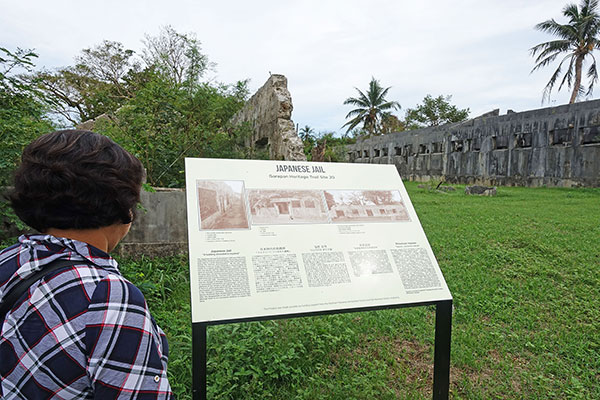Take the Garapan Heritage Trail challenge!

Are you up for a walking tour around Garapan?
The village is not merely the commercial and urban center of Saipan. Discover and learn more about the past by visiting 20 historical and cultural sites in Garapan, which has played a significant role in the island’s history for over three millennia.
The sites are part of the Garapan Heritage Trail tour launched last Friday by the NMI Humanities Council.
Representatives of tour companies, the education sector, and the media hopped on a chartered bus to check out and experience the sites. Humanities Council executive director Leo Pangelinan emphasized, though, that the tour is best experienced on foot since some of the sites are in narrow passages inaccessible to buses.
“This Garapan Heritage Trail tour is intended to be a walking tour,” Pangelinan said. “The council, we’ve gone out, our staff have read history books, as well as try to corroborate the story with the elders to make sure that we are explaining the history of the sites correctly.”
The tour last Friday started at the American Memorial Park, with lead ranger Brooke Nevitt talking about the history of, and what programs they have at the AMP. Other sites visited include the Carolinian Utt, the Nambô Pier, the Catholic Church Bell Tower, the Sugar Train Locomotive and the Matsue Statue at the Sugar King Park, Saipan Jinja, and the old Japanese Jail.
It also included a trip to the NMI Museum of History and Culture, which, from 1926 to 1944, served the public as a Japanese hospital.
Pangelinan hinted that more sites could be added to the 20 sites that are currently part of the heritage trail.
“Some of the unofficial historians on our tour today were pointing out some other historical sites in Garapan, as we were driving along, that are worthy of recognition and explanation,” Pangelinan said.
The council has also not included historic sites that are on private property.
“Maybe Phase 2 of our project is to put those on the map and explain to tourists that, if they want to access those places, here are the owners. This is how you can get permission to get on the property and look at, whether it’s a cave [or] remnants of a building.” Pangelinan added.
A digital map, as well as additional information about the Garapan Heritage Trail can be accessed via garapanheritagetrail.com.
Printed maps are also available through the Marianas Visitors Authority and the Humanities Council. At the moment, information is available in five languages: English, Japanese, Korean, Chinese, and Russian.






